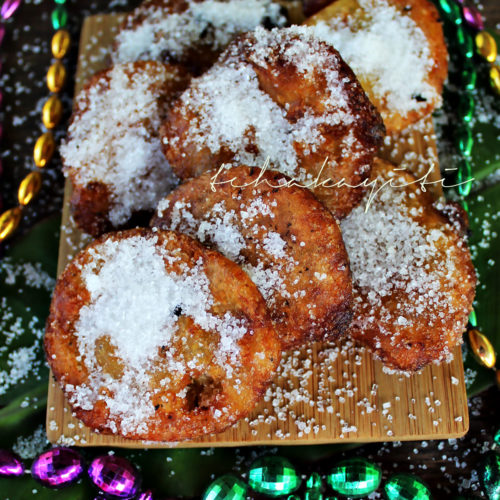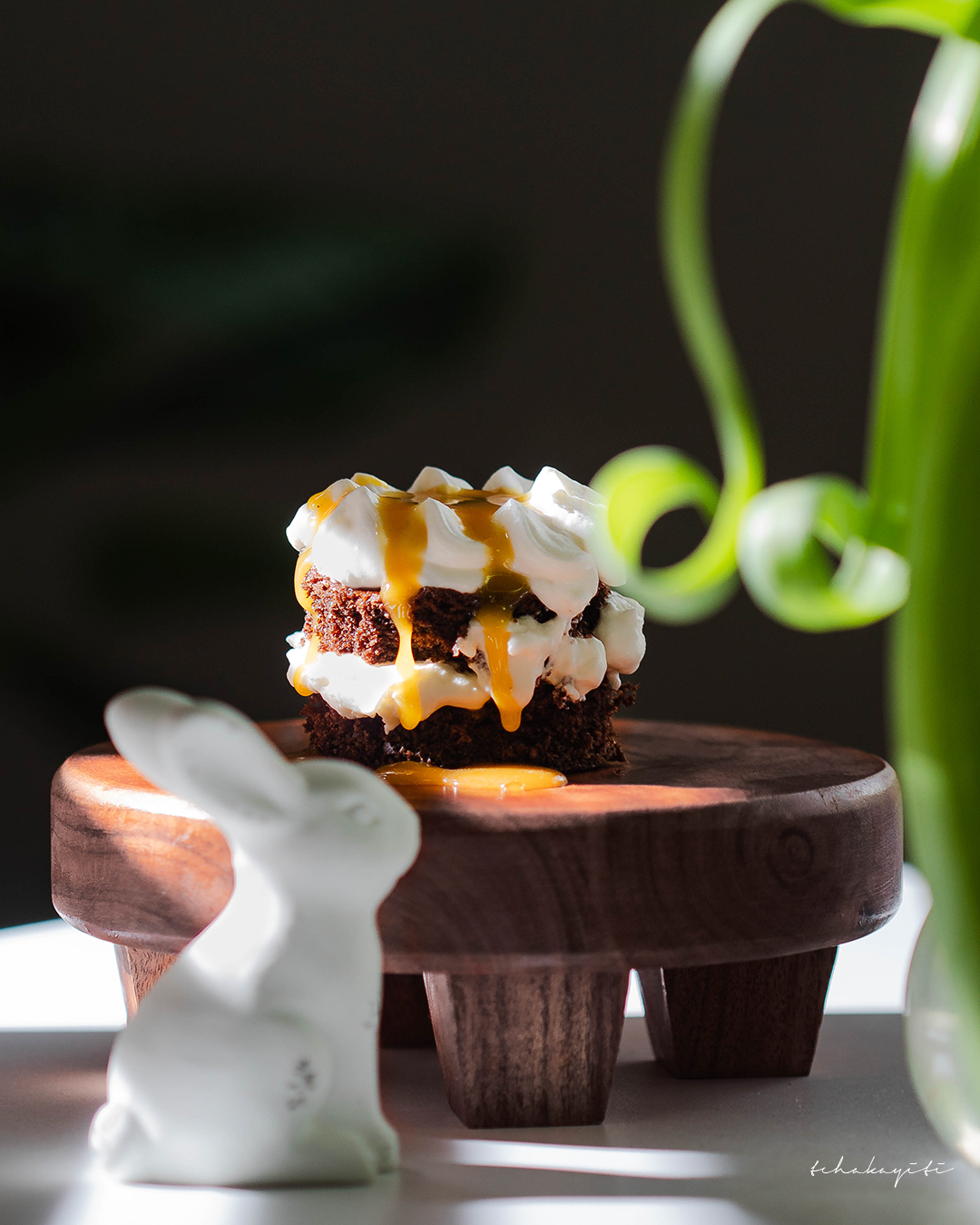This article was first published on February 26, 2014. I have updated it with an improved recipe.
♪♩Qu’y a-t-il oh, dans la rue oh, je ne peux pas dormir, c’est jour de carnaval chacun va s’amuser, sauter, rire ou crier, chanter, pomper de joie!… ♫
(What’s going on in the streets, I cannot sleep, it’s carnival day, everyone is going to have fun, jump, laugh or scream, sing, jump with joy…)
My first memory of our Haitian beignets is closely tied to the above song. I discovered both during a costume Carnival party at my preschool. I was probably four. I spent most of the evening next to the beignet batter, watching as they dropped it by the spoonful in sizzling hot oil.
The mouth-watering smell that emanated from the pot had drawn me in. And I waited impatiently for my turn to have my share, not without skipping the line. I even remember, Dedette, the cook, reprimanding me countless times because I simply wouldn’t get away from the hot pot in spite of her warnings. In fact, if memory serves me right, I repeatedly gobbled up my share of beignets and came back begging for more. That is how my love for beignets began. I have been eating them religiously during carnival season ever since.
Beignets are an intrisic part of our Kanaval tradition.
You won’t easily catch a traditional Haitian family eating them outside of that season. Beignet season begins on January 6th, which marks the official start of the carnival period, and ends at 11:59pm on Mardi-Gras day.
Technically speaking, we must fry and eat all beignet batters before Ash Wednesday. We’re not supposed to eat beignets during Lent, especially not on the first day of the season. That is of course an implied rule we often break. But don’t hold that against us. Our Mardi-Gras day ends around five on Wednesday morning. While dancing, we often fail to realize that we’ve transitioned to the next day. In our mind, Lent begins when we leave the festivities and get home. It thus kicks off around 6 am and not before. Then and only then do we start feeling guilty about eating these treats.
If you’re unfamiliar with our beignets, know that they’re different from the typically puffed fried batter served elsewhere. Our Haitian beignets are flat and banana based. They look like mini crêpes more than anything else, but we mostly eat them for dessert.
Though there are some recipes that call for banana chunks, our traditional beignet recipe calls for mashed ripe bananas and a lot of sweet spices and vanilla. We serve them hot or cold with a generous amount of sprinkled sugar. The longer they sit in that sugar, the better they seem to taste. They acquire a nice crunch all the while retaining their smooth texture.
They’re definitely a must during the entire season. At my house, my mom prepares and fries a new batch every Sunday evening. But we eat them daily through the three official days of Kanaval.
If one day you attend our carnival, do not hesitate to try our beignets, even if they are cold. A cold beignet eaten on a carnival stand gives as much joy to the taste buds as a hot one.

Street style Haitian beignets
Ingredients
- 2-3 very ripe bananas
- 1 cup of flour
- 1/3 cup of sugar
- 1/4 tsp of baking soda
- 1 cup of water
- Pinch of salt
- Vanilla Essence to taste
- Powdered nutmeg to taste
- Powdered cinnamon to taste
- Oil for frying
Instructions
- Mash the bananas
- Add the flour, baking soda, salt, vanilla, nutmeg, cinnamon and sugar
- Incorporate the water
- Mix well
- Drop the batter by the spoonful in sizzling hot oil
- Fry until they turn golden
- Sprinkle generously with sugar and serve








21 Comments
The recipe was on point. The beignets brought back so many childhood memories. Thank you for sharing.
My pleasure! Happy you enjoyed your trip back in time! Thank you for visiting the blog.
Your comment is awaiting moderation.
How many beignets does this recipe make?
Your comment is awaiting moderation.
It’s not at all carnival season, but we wanted beignets today, so we’re having some 🤭. I couldn’t remember how to make them, so i searched for recipes, and all the ones i found called for eggs, but i don’t remember my mother ever using eggs in her recipe, so thank you for this. Can’t wait to make them tonight 😊
Mezanmi jan mwen tap chèché konin koman yo fè’l . Li bien simple! Très bon! Merci 😃
Mwen kontan mwen pèmèt ou enjoy yo!
I was looking for a beignet recipe and I am so happy I found your’s. The song at the beginning sold it for me. So many memories!!!
Thank you
Thank you for reading me and trying the recipe. Happy to bring happy memories back 🙂
Can we prepare them ahead of time?
yes, you definitely can. We actually typically do just one batch for the whole Kanaval/Mardi-Gras weekend and keep it in the fridge.
Moi j’ai remplacé l’eau par du lait concentré non sucré histoire d’augmenter les calories sur mes hanches lol. En tt cas le goût y est et les souvenirs aussi…. Merci pour la recette
lol nous les préparons ainsi parfois. Un plaisir de partager mes recettes avec vous.
Merci, Lil bon wi apil
Un plaisir 🙂
li bon wi
Thank you for sharing the recipe, making some tonight.
My pleasure. Hope you enjoyed them 🙂
I’m going to try & make some! Thank U for the recipe!
Let me know hw you like it! 🙂
Beignets are delicious. Once we start eating cant stop. Thanks for sharing your story.
They’re addicting! lol Thanks for taking the time to read me 🙂
Heureusement que nous les consommons qu’en periode pre et carnavalesque… sinon, ce serait la cata!!! lol…
lool se pa manti!